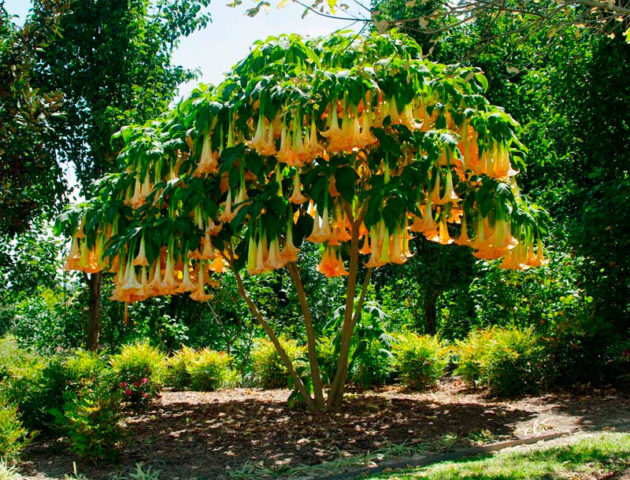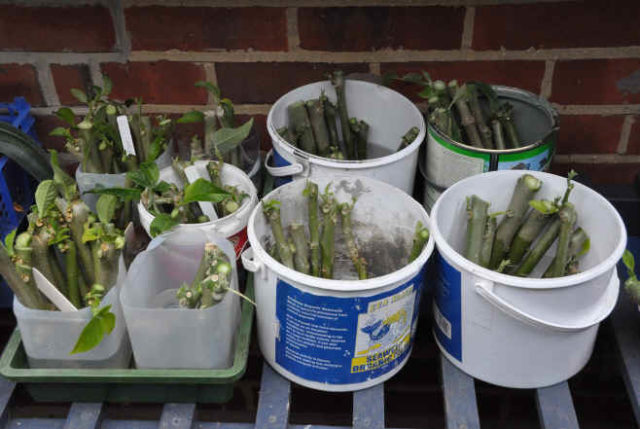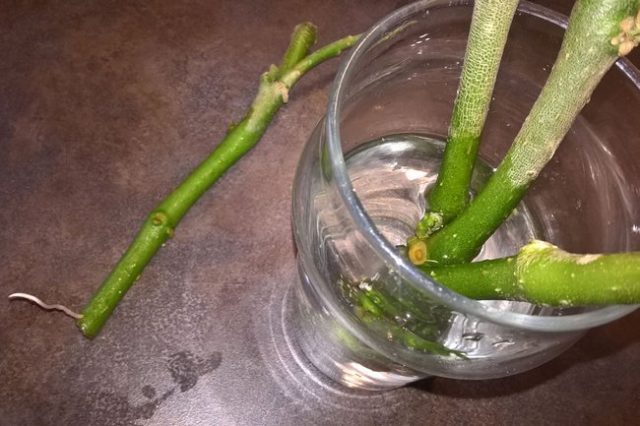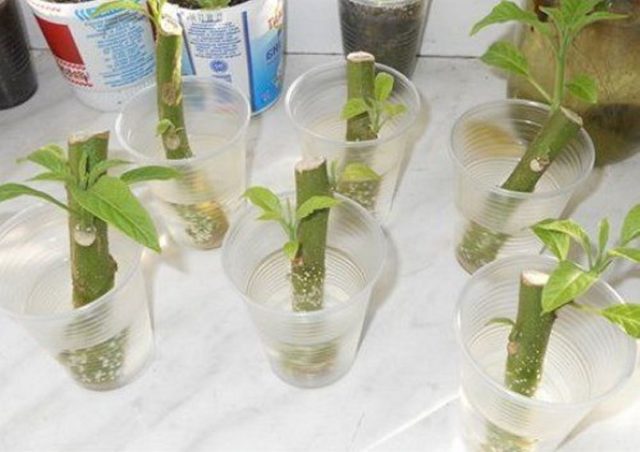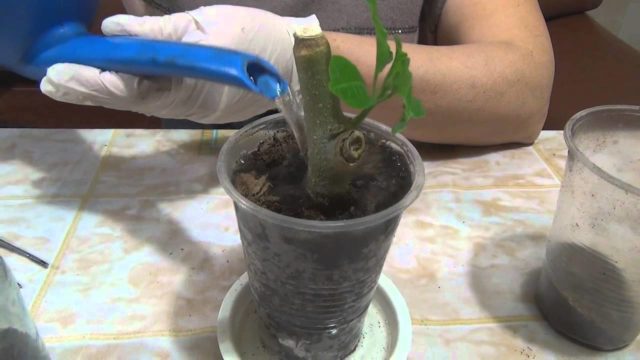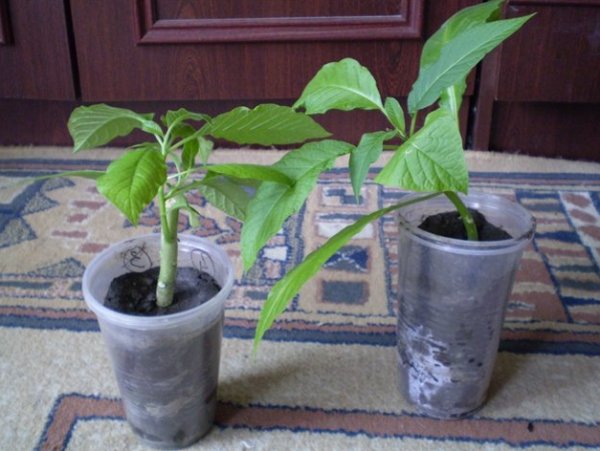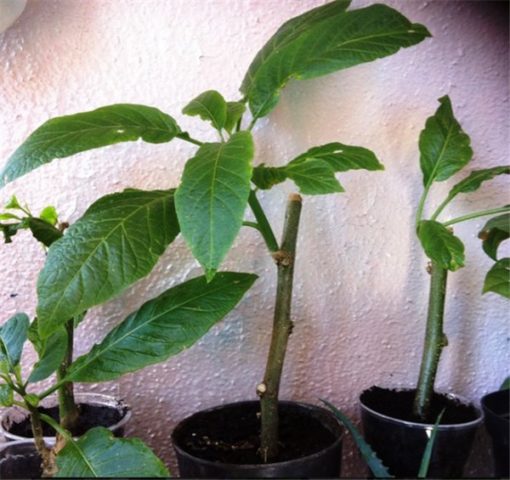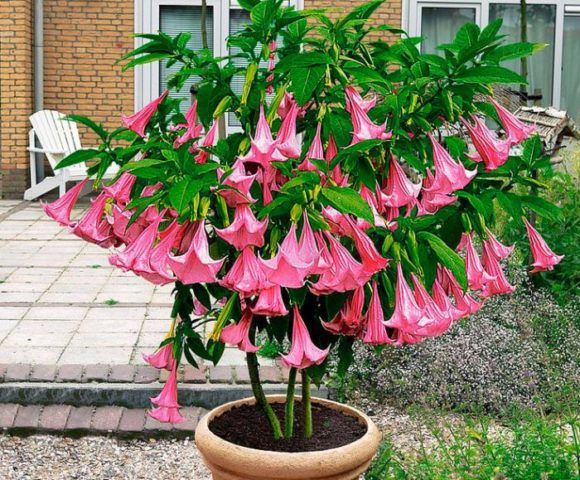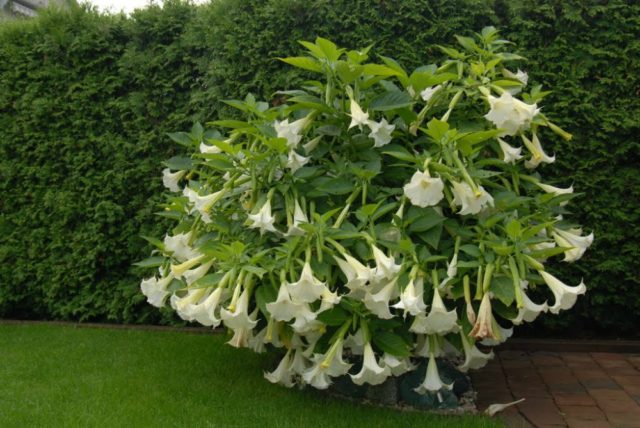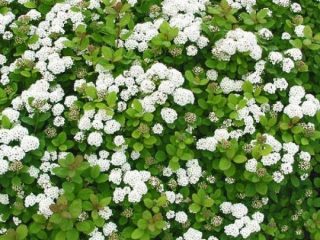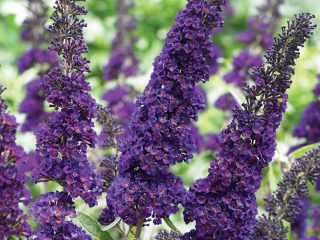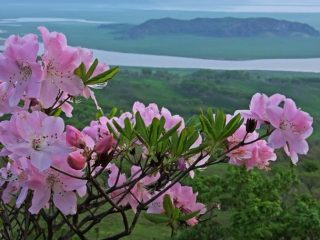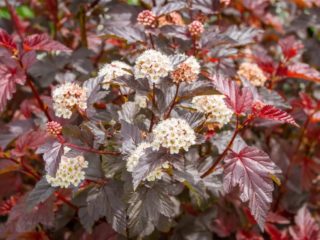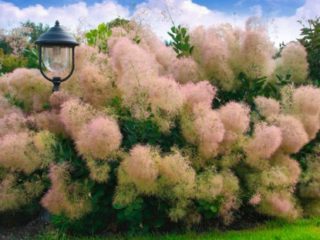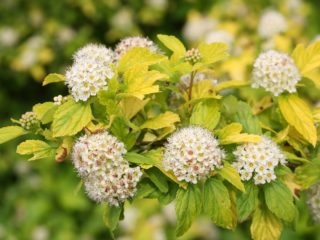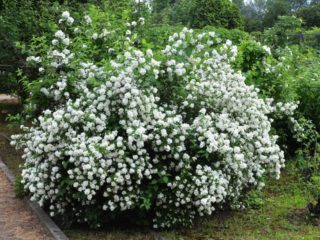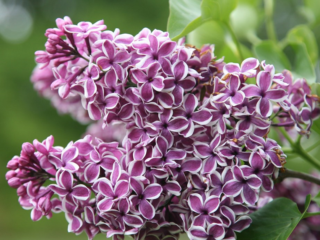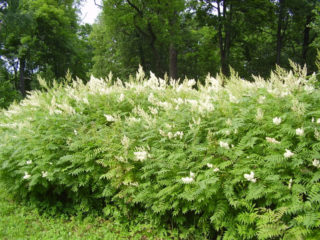Content
Brugmansia is a South American flower with a woody stem that can grow up to 5 meters in height. Brugmansia can be propagated in various ways: by seeds, layering or cuttings; the latter method is the most preferable. Brugmansia cuttings can be prepared in spring or autumn.
Features of growing Brugmansia from cuttings
You can grow Brugmansia from cuttings when the plant is one year old. The general growing strategy will be approximately the same:
- first, cuttings are formed;
- then preliminary rooting of the cuttings is carried out;
- young seedlings are planted in temporary containers, where the rooting process is completed;
- Seedlings ready for transplanting are planted in a permanent place - in a pot or open ground.
Differences in cultivation manifest themselves primarily in the methods of obtaining cuttings.Depending on the time of year when planting material is harvested, the mechanism for its preliminary preparation will be different.
When is the best time to take Brugmansia cuttings?
Usually cuttings are carried out in the fall, in September, or in the spring, in March.
Spring cuttings are more preferable, since in the spring the flower has more active sap flow and it takes root faster. On the other hand, the first flowering of a new plant during autumn cuttings will occur almost a year earlier.
Brugmansia cuttings in autumn
In this case, take branches with a lignified trunk. Theoretically, Brugmansia can be propagated using green cuttings, but the result will be much worse. Preparation of cuttings is carried out before the onset of frost.
Brugmansia, the cuttings of which were cut in the fall, will bloom the following summer.
Brugmansia cuttings in spring
Brugmansia can also be propagated by cuttings in the spring. Spring cuttings are carried out in a different way. In this case, young shoot tips are used as planting material.
Spring cuttings provide better seed material, but such Brugmansia will bloom, at best, only next year.
How to propagate Brugmansia from cuttings
When propagating Brugmansia by cuttings, you should decide what result is needed in the end. If the goal is to get a flowering plant as soon as possible, and the percentage of rooted material is unimportant, choose cultivation with autumn cuttings.
In this case, it is necessary to prepare seed material with some reserve, since the method of forming autumn cuttings allows this. On average, autumn seeding material (in the number of cuttings) can be obtained approximately 3 times more than spring seeding.
If the goal is to obtain higher quality seed material, with a higher survival rate, then you will have to sacrifice the speed of the process; in the best case, you will get a flowering plant only a year and a half after the start of cuttings.
The number of cuttings obtained in the spring is significantly less than those obtained in the fall, since the number of young shoots of the plant is limited. On the other hand, they have better survival rate due to their rapid growth and rooting rates.
Below are the features of growing Brugmansia using planting material cut at different times of the year.
Rules for taking cuttings
Depending on when you plan to harvest planting material, the harvesting rules will differ significantly.
Autumn harvesting
The branches are divided into cuttings in such a way that each of them has at least three buds. The length of the segment in this case is not critical; even short shoots 30-40 mm long will do. In this case, very large leaves should be cut off; small leaves and shoots can be left.
Spring harvesting
During spring harvesting, exclusively young shoots up to 20 cm long are used. The lower leaves are cut off from them, and the shoot itself is placed in a container with water, which is covered with a plastic bottle. The neck and bottom of this bottle are cut off.
To improve root formation and to prevent leaves from falling from spring cuttings, daily spraying of seedlings with warm water is used.
Preparation of cuttings
Depending on when the cuttings were formed, their preparation will also be different.
During autumn cuttings
The cut cuttings should be installed in a substrate that is a mixture of garden soil and perlite. If rooting occurs in a greenhouse, there is no need to cover the cuttings. If rooting is carried out at home, the box with cuttings should be covered with film. The duration of the rooting process can be quite long - up to 1.5 months.
Rooting Brugmansia cuttings in water has worked well. To do this, the cuttings should be placed in a container with a small amount of water, to which 2 tablets of activated carbon have been added. The container with water should be placed in a dark room.
After the cuttings take root, they must be transplanted into individual plastic containers - seedling pots. Further care of the sprouted cutting includes all the necessary procedures for working with plants: watering, fertilizing, weed control, etc.
When cutting in spring
Within a few weeks, small roots will appear on the young cuttings. To finally root Brugmansia cuttings, they should be transplanted into the ground. The composition of the soil can be as follows:
- sand – 1 part;
- perlite – 1 part;
- peat – 2 parts.
After about 15 days, the seedlings can be transplanted to a permanent location. This can be a pot or temporary container where the plant will remain until it is transplanted into open ground.
Landing
Further actions for propagating Brugmansia by cuttings are no longer differentiated by how the cuttings were obtained and how their preliminary germination was carried out.
After the process of formation of the root system is completed, care for a young, full-fledged seedling is the same for seed obtained both in spring and autumn.
The criterion that the time has come for planting a young seedling in a permanent place is that its root system almost completely fills the entire free space of the individual container. This moment is easily determined visually either by the roots that have taken up all the space in the jar, or by the raised substrate in a temporary container, from under which the whitish roots of the plant are already protruding.
Planting is carried out in large containers. The volume of the pot must be at least 15 liters. Drainage is placed at the bottom in the form of small pebbles or expanded clay 3-5 cm high. Humus or compost is placed on the drainage layer; the height of the organic layer is 5-7 cm. The use of manure is not recommended, since it increases the acidity of the soil, and the soil should be neutral or slightly alkaline.
The approximate composition of the soil is as follows:
- leaf soil - 2 parts;
- sand – 1 part;
- peat – 1 part.
If the soil is too dense, it is recommended to increase the share of sand to 1.5 parts.
The seedling is placed in a pot and covered with soil strictly to the level of the root collar.
After lightly compacting the soil, water the plant.
Care
Caring for a seedling is similar to caring for an adult plant, with the exception of issues related to pruning the plant. Brugmansia is not pruned before transplanting into open ground.
Care consists of abundant and frequent watering without stagnant water, as well as the application of mineral and organic fertilizers.
Watering is carried out as the top layer of soil dries out. All soil in the pot should be moderately moist.
In the first month after planting, the plant will require nitrogen fertilizers. It is recommended to use urea in doses appropriate for growing ornamental plants. The frequency of application is 10 days.
In subsequent months, it is necessary to apply phosphorus-potassium fertilizers, alternating with organic matter (mullein or a solution of 1 to 10 bird droppings). The application interval does not change - 10 days.
Transplantation into open ground
After the seedling has grown stronger, it is moved to a larger pot or the plant is transplanted into open ground. In open ground in a sunny area, it is necessary to make a hole 50 cm deep and 70-80 cm in diameter. A drainage layer in the form of broken bricks or crushed stone is laid at the bottom of the hole. A layer of humus or compost is placed on top of the drainage layer.
The young plant is replanted entirely with the lump of earth in which it grew in the pot. To avoid injury to the root system, the transshipment method should be used. The space around the lump is filled with earth, it is lightly compacted and watered.
Conclusion
Brugmansia cuttings are the most effective means of propagating this plant. Depending on the time of harvesting (spring or autumn), various methods of their preliminary rooting are used. From cuttings obtained in the fall, an adult plant forms faster, although the survival rate of seedlings is somewhat lower. After the plant’s root system has formed, its cultivation is the same for both cutting methods.
